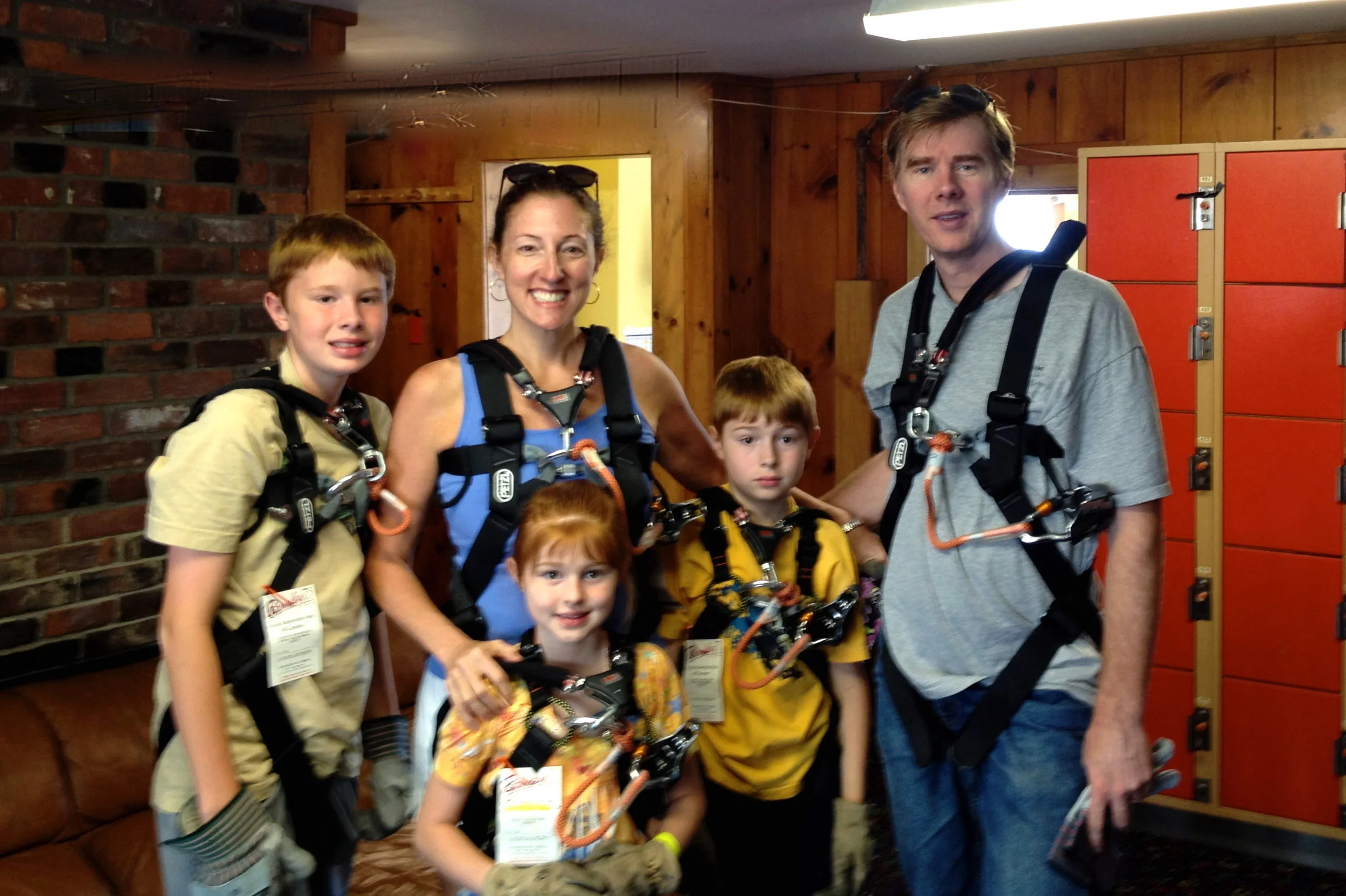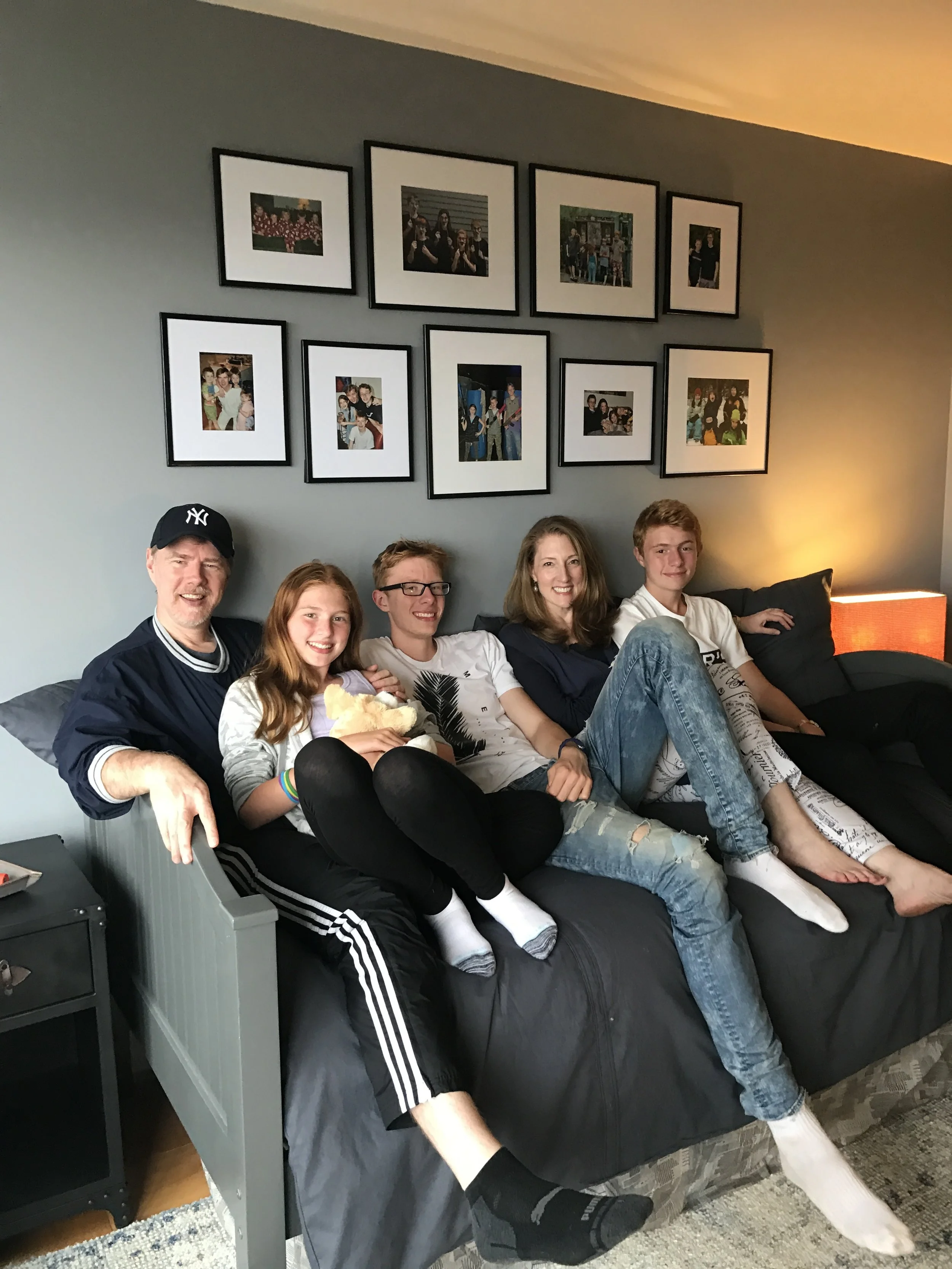A Mother's Perspective
If you asked me to describe my son in one word, I would choose “BEAUTIFUL.” Brian’s birth was beautiful. He was born completely en-caul, which statistically happens in 1 in 80,000 births.
Brian’s eyes are beautiful; they are chocolate brown Hershey kisses and round as melons. His smile is beautiful; he grins from ear to ear and it comes from a place deep from within. His voice is beautiful; its rich tenor can be heard above a crowd and commands an audience. Brian’s soul is beautiful; you can’t touch it but somehow when you are with him, you feel it. But all this beauty can’t protect him from a disease that could threaten his life.
Maybe I should have known when he was very little that something was wrong, but he was my second son. I had my hands full with 2 toddlers. At the age of 3, he had an earache that resulted in bleeding out of the ear. At the time, we dismissed it as an abnormality and focused on whether or not there would be hearing loss. We never considered the possibility that something else had caused the unusual bleed. It was not until he was 8 years old that our world was turned upside down.
I remember it like it was yesterday. My husband said in the middle of the night, “Julie, stay in bed. Brian is okay. I don’t think you should see this.” These are not exactly the words you want to hear as a mother. Bob and Brian were sitting in the bathroom. Bob had Brian on his lap. There were big red tears, like gumdrops on Brian’s eyelashes. They both had this rather bewildered look on their faces. I thought, can this really be happening? What child bleeds out of his eyes? I can’t really remember what happened next. I think shock does that to you.
A few trips to the local diagnostics centers, many vials of blood, a couple of screw-ups, and Brian was finally diagnosed with Von Willebrand Disease. Von Willebrand Disease (VWD) is a bleeding disorder. It affects your blood's ability to clot. If your blood doesn't clot, you can have heavy, hard-to-stop bleeding after an injury. The bleeding can damage your internal organs.)
The saying goes, “small kids - small problems; big kids - big problems”. In my case, I had just learned that my little one had a huge challenge, one that would stay with him for the rest of his life. No matter how big he got, I would always be worried and watching.
For the next several years, I tried to focus my attention where it was needed most, which technically was everywhere: My oldest child - a newly-minted tween, brilliant, shy, sensitive - he needed me. My youngest child - funny, charming, irreverent, but still finding her way - she needed me. And then there was Brian, my very own David facing down Goliath – he needed me too. Having a child with a disease is no small disruption in this world of helicopter parenting, making it a struggle to keep my ‘copter hovering over all three. Overwhelmed, I reasoned with myself: let’s learn what we can. Let’s be realistic. Let’s be problem solvers. One step at a time, but let’s not allow this disease to consume us. Let’s take advantage of what the Hemophiliac Centers are offering. When they said meet with a social worker, we did it. When they said get a medical alert bracelet, we did it. When they said, tell everyone Brian has a disease and these are his limitations, we did it. But if you know Brian, you know he needed to test those limitations himself.
Brian loves sports. Not from the comfort of our couch, but from the field as part of the action. When he was diagnosed, he was participating in Tae Kwon Do, but sparring was now off limits. He stuck with it for a while, but eventually, we all agreed it was not a viable sport for a kid with a bleeding disorder. Then, seemingly overnight, Brian fell in love with soccer. More than that, he became obsessed and there was no keeping him from it.
Watching Brian play for his 8th-grade soccer team nearly gave me a heart attack each week. He had joint pain and bruises. We had our slew of medications and concoctions, but inevitably he would get hurt, once with a bruise the size of an egg on his forehead. Brian’s demeanor was so calm. The nose bleeds, the bruising, the amicar, the stimate … it had all become a normal part of his life, of our life. We had a little pack we carried around – I had it embroidered with the words: Meds 4 Brian. He went to camp. He played games. Everyone knew he had an issue. He bled at school. He bled on the soccer field. He bled at home. But life did not stop. We all got educated on the things we could do and the things we could not do. New limits were defined. Technically he’s not supposed to “head” the ball when he plays soccer. He tells me he doesn’t, but I know he does (is there a gentle way to make contact with a ball coming at you at 30MPH?). Sometimes he hides the really big bruises from me. I get it. Teenagers are invincible. I was one too. But I didn’t stop him from living and he didn’t stop himself from living.
He is never ashamed. He asks for help when he needs it. And as his parents, we tell everyone who needs to hear it: My son has type 2 VWD and while we don’t want you to treat him with special privileges, we do want you to seek medical attention immediately if warranted! He never leaves home without his medic alert tags or bracelets.
And I did not have to neglect my other 2 children to focus on Brian. Yes, if you ask the oldest, he will say he is not the favorite. If you ask the youngest, she will say she is not the favorite. And if you ask Brian, he will say he is not the favorite. From my point of view, I have done a good job raising them as equals and helping Brian to grow into a man on a mission vs a man with a disease. Watching Brian manage his diagnosis is, ironically, a true gift. He is resilient. He takes care of himself, but he also takes charge. He does it for himself because no one else can do that for him. It’s not a bad way to be about an ugly disease.
I can only describe it as “beautiful.


